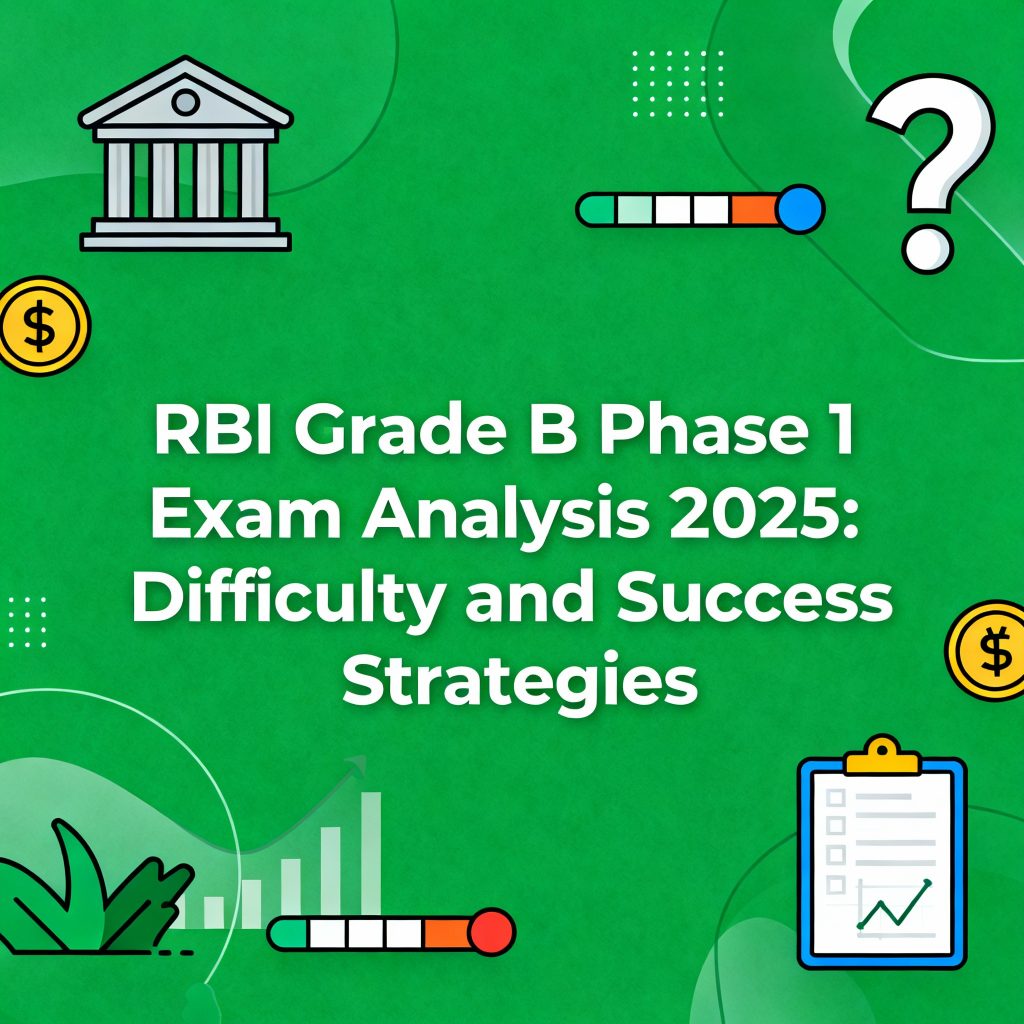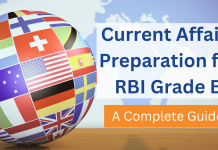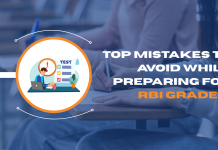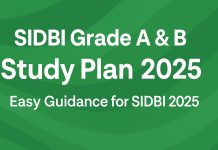The RBI Grade B Phase 1 Exam 2025 stands as a defining moment for every aspirant dreaming of a reputed career in the banking sector. It is recognized as one of the toughest and most prestigious government exams in India. This means that the exam attracts candidates nationwide who wish to serve in the country’s central bank. Every year, the excitement and anticipation around this exam grow, given the increasing need for skilled officers at the Reserve Bank of India.
For 2025, the stakes are higher than ever. With thousands of candidates fiercely competing for limited vacancies, the Grade B exam sets rigid standards in banking and financial awareness. Designed to filter out only the best-prepared candidates, Phase 1 challenges aspirants on critical abilities: time management, problem-solving skills, conceptual clarity, and knowledge of current affairs.
From students fresh out of college to experienced professionals aiming for a career shift, the exam has universal appeal and is seen as a gateway to stability, growth, and immense respect in the financial community.
As India’s economy evolves and regulatory systems advance, the RBI needs Grade B officers who can think analytically, interpret financial data, and respond swiftly to changes. The robust selection process ensures only the most deserving are chosen, making this exam a benchmark for excellence in competitive banking recruitment. This detailed analysis aims to help candidates strategize with insights into the question paper, cutoff trends, section-wise review, and actionable tips for future exams.

Overview of RBI Grade B Phase 1 Exam 2025
The RBI Grade B Phase 1 exam comprises four main sections: General Awareness, Reasoning Ability, English Language, and Quantitative Aptitude. Candidates must navigate 200 questions within 120 minutes, with negative marking for incorrect answers, emphasizing precise problem-solving and careful time management. Recognized for its transparency and fairness, the examination is conducted online across designated centers throughout India.
RBI Grade B Phase 1 Exam Pattern and New Trends
The RBI Grade B Phase 1 paper in 2025 followed a consistent format, but candidates observed new patterns such as a greater focus on analytical puzzles, higher weightage on current financial events, and an increasing number of data interpretation problems. These subtle changes reflect RBI’s drive to assess practical skills rather than rote learning, making regular mock tests and updated preparation strategies vital. You can get further information on this from the table given below:
| Section | Questions | Marks | Duration | Level |
| General Awareness | 80 | 80 | 25 min | Moderate |
| Reasoning Ability | 60 | 60 | 45 min | Moderate |
| English Language | 30 | 30 | 25 min | Easy to Moderate |
| Quantitative Aptitude | 30 | 30 | 25 min | Moderate to Difficult |
| Total | 200 | 200 | 120 min | Moderate |
RBI Grade B Phase 1 Exam Section-Wise Analysis
Now that you have an idea about the exam structure, let’s analyze the Phase 1 exam section-wise.
General Awareness
The General Awareness section for 2025 focused predominantly on recent RBI policies, regular monetary updates, and national economic developments. Candidates were expected to be updated with the latest government schemes, notable financial reforms, and a variety of banking-related terms.
Mastery of current affairs, specifically from the previous six months, was essential for those targeting high scores in this section. Aspirants who stayed in touch with both national and international events consistently performed well, underlining how this part of the test played a critical role in overall success.
Reasoning Ability
In the Reasoning Ability section, candidates encountered a comprehensive mix of analytical problems. This included complex puzzles, various coding-decoding scenarios, and challenging seating arrangements that tested problem-solving under time constraints. The section’s structure placed heavy emphasis on logical deduction and pattern detection.
A sizable proportion of the questions were puzzle-based, meaning aspirants had to manage their time meticulously to attempt other categories like syllogisms, data sufficiency, and directional logic. With such a design, the section reliably distinguished highly prepared candidates.
English Language
The English Language section was constructed to evaluate comprehension, grammar, and clarity of expression. Carrying a blend of passage-based questions, error spotting exercises, cloze tests, and sentence rearrangement challenges, this part of the exam measured both reading efficiency and linguistic accuracy. Those with a robust command of grammar and vocabulary were able to handle the direct nature of the questions, ensuring they maximized attempts within the time limits.
Quantitative Aptitude
Quantitative Aptitude stood out as the most robust and time-consuming section. Candidates faced questions that required the application of arithmetic concepts, interpretation of complex charts and graphs, quadratic equations for fast mathematical reasoning, and intricate number series.
Solving these within strict time limits demanded not just calculation speed but a deep understanding of mathematical concepts. Only the best-prepared participants could attempt all questions confidently, as the combination of speed and accuracy was vital to scoring well here.
Performance Insights: Cut-off Trends, Student Feedback, and Exam Experience
The safe zone for good attempts in the RBI Grade B Phase 1 Exam 2025 remained around 80–88 questions, provided accuracy was above 75%. Sectional cutoffs ensured that the candidates maintained balance across all areas instead of relying solely on their strengths. Understanding these cutoff trends and aligning preparation strategies proved essential for qualifying.
From candidate feedback, the overall paper was described as “moderate but tricky,” largely due to unexpected current affairs and lengthy reasoning puzzles. Many emphasized that consistent mock test practice was invaluable for managing time pressure and improving accuracy. Aspirants who regularly revised RBI notifications, policy updates, and financial news found themselves better equipped to handle the dynamic and analytical nature of the General Awareness section.
Proven Preparation Strategies for RBI Grade B Phase 1
- Start early and follow a structured plan. Successful candidates devoted at least three months to systematic study, balancing all four sections with consistent revision.
- Focus on RBI updates and financial news. Policy changes, economic data, and new circulars often formed more than 50% of General Awareness questions. Regularly reading the RBI’s official releases and reliable financial dailies like The Hindu Business Line or Economic Times proved highly effective.
- Practice full-length RBI Grade B Phase 1 mock tests. Simulating real exam conditions builds mental stamina, improves accuracy, and helps aspirants understand which sections require time optimization.
- Work on time management. Switch quickly between sections during practice sessions. This adaptability is often the deciding factor in crossing the overall cutoff.
- Revise the fundamentals. Grammar, arithmetic concepts, and puzzle-solving frameworks must be strong to handle evolving question patterns.
- Stay consistent and analyze performance. Reviewing mock test results weekly helps identify weaknesses early and refine strategies before the final exam.
- Maintain balance between current affairs and conceptual clarity. Reading selectively yet deeply ensures better recall during the exam, especially under time pressure.
Importance of the RBI Grade B Exam
As the central regulatory authority, the Reserve Bank of India is vital to the nation’s financial stability and economic governance. Grade B officers serve as policymakers, analysts, and financial regulators who help shape India’s economic trajectory. Cracking Phase 1 marks the beginning of this prestigious journey, opening doors to a career that combines responsibility, learning, and long-term growth.
Conclusion
The RBI Grade B Phase 1 Exam 2025 reaffirmed its reputation as a test of intellect, precision, and perseverance. While the paper maintained a moderate difficulty level, its evolving trends demand adaptive preparation, consistent practice, and an analytical mindset.
With proper strategy, focused revision, and an understanding of real exam expectations, aspirants can position themselves among the top contenders. The exam is not merely a test of knowledge—it is a measure of discipline, awareness, and strategic acumen that defines future leaders of India’s financial system.
ixamBee specializes in providing expert guidance and resources for banking exams 2025, ensuring that you are well-prepared for the Upcoming Bank Exams like RBI Grade B, NABARD Grade B, IBPS SO, and more. Our courses align with the bank exam calendar 2025, covering all the essential topics. With a focus on the upcoming bank jobs, our Previous Year Papers, BeePedia, SSC CGL, SSC CHSL, SSC MTS and other Mock Tests are designed to help you excel in upcoming banking exams.
Also Read:
Top Mistakes to Avoid While Preparing for RBI Grade B
RBI Grade B 2025 Exam Notification Now!
Preparing for RBI Grade B Exams with NCERT Books















